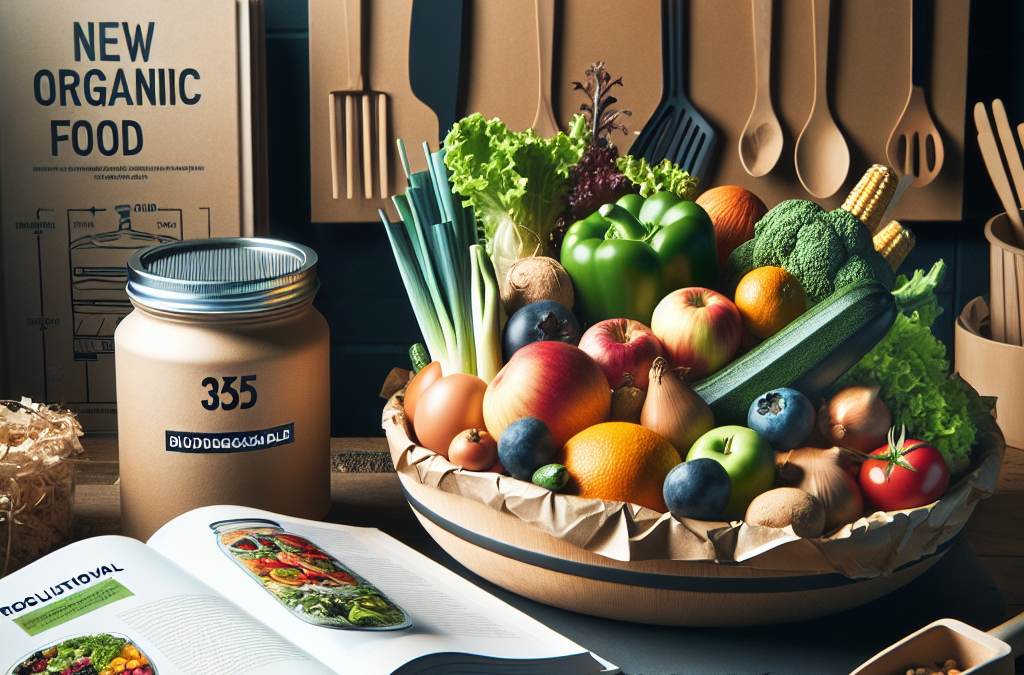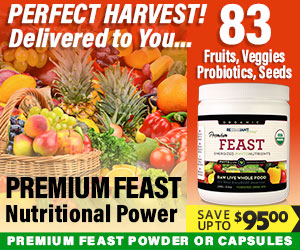1. Innovative Farming Practices
Vertical Farming
One of the most exciting innovations I’ve come across is vertical farming. It’s not just a trendy term; it’s a game-changer. Picture this: farms that grow crops in stacked layers instead of traditional fields. With cities getting more crowded, vertical farms can help bring food production right into urban areas, which means fresher produce and fewer carbon emissions from transportation.
This method uses technology to ensure that plants get the perfect amount of sunlight, water, and nutrients. I’ve seen some that employ hydroponics or aeroponics. It’s fascinating—plants grow without soil! It may sound odd, but it’s a smart way to save resources and get fresher food directly where people need it.
As someone who loves trying new things, I can’t help but be excited about how this method might change grocery shopping. Imagine picking up fresh basil grown just a few floors above you in a downtown high-rise!
Regenerative Agriculture
Another trend gaining momentum is regenerative agriculture. Unlike conventional farming methods that may deplete the soil, regenerative practices are all about giving back. It focuses on techniques that restore the soil’s health and biodiversity. Personally, I’ve become more aware of how the health of our food starts with the soil.
Farmers are now utilizing cover crops, crop rotation, and no-till farming practices. These strategies not only improve soil fertility but also store carbon and enhance the ecosystem. It’s like a win-win for farmers and the planet, and I can genuinely say I feel better about the food I eat when I know it’s grown sustainably.
This shift invites us to reconsider what we put on our plates. Regenerative farming sees us as part of a larger system, nurturing the earth instead of just extracting from it.
Tech-Driven Solutions
The tech side of farming is incredibly cool! I’ve seen drones flying over fields and sensors planted in the soil, providing real-time data to farmers. These innovations help optimize water usage and track crop health more accurately than ever. It’s a sophisticated approach that connects nature and technology.
What excites me is how accessible this tech has become for small-scale farmers. They might once have thought of themselves as too small to benefit from these advancements, but now, there are apps and tools tailored just for them. I believe that this democratization of technology can lead to a broader adoption of sustainable practices.
Having these solutions means we can produce food more efficiently, making it not only better for our tables but also for the environment. The future of food is looking smarter!
2. The Rise of Plant-Based Foods
Meat Alternatives
Let’s talk about plant-based diets—I’ve been on this wave for a while. It feels like every week there’s a new meat alternative hitting the shelves. It’s not just about tofu and tempeh anymore; we’re seeing burgers, sausages, and even chicken made entirely from plants. The taste and texture have come a long way, making it easier for folks to make the switch or at least incorporate more plants into their lives.
From my experience, many friends have raved about their ease in substituting familiar meals with these alternatives. As someone who enjoys exploring flavors, I appreciate the variety and creativity in this space!
The clear environmental benefits also impress me—reducing our reliance on animal agriculture can contribute to tackling climate change. Every time I pick up a plant-based option, I feel like I’m making a positive impact.
Diverse Flavor Profiles
This isn’t just about making healthier choices—it’s a rich tapestry of flavors. The focus is shifting toward ingredients like jackfruit, lentils, and various grains. I’ve had some amazing meals that play up these nutrient-rich foods in delicious ways. They aren’t just boring; they’re vibrant, colorful, and packed with nutrients!
Thanks to the rise of social media, I find tons of recipe inspiration to try these new ingredients. Whether Thai curries with lentils or smoky jackfruit tacos, it’s incredible how enticing plant-based eating can be!
As a bonus, exploring diverse cuisines and flavors broadens my culinary skills. I’m a fan of experimenting with new recipes and seeing where these trendy ingredients can lead my taste buds.
Health and Wellness Focus
The emphasis on health and wellness continues to drive the plant-based trend forward. More people are tracking their health and wellness metrics, and many are turning to plant-based diets as a way to feel better physically and mentally. It’s genuinely inspiring to see the number of food blogs and cookbooks dedicated to this movement—a reflection of how we’re growing more mindful about what goes into our bodies.
Personal stories of transformation abound as individuals discover how plant-based eating boosts their energy, skin, and mood. It’s not about strict diets but rather making mindful choices that align with our lifestyle! I often share these inspiring stories with friends to motivate them to try new foods.
I regularly advocate for incorporating a few more plants into our meals—whether that means a vibrant salad or a hearty grain dish. The shift towards health is profound, and I see it only continuing to grow.
3. Local and Community-Supported Agriculture
Farmers Markets
There’s something special about visiting a local farmers market. I always look forward to my Saturday morning routine of walking through the stalls and chatting with farmers. This trend is thriving, as consumers increasingly prioritize local over imported foods. It’s a great way to support local economies and enjoy produce at its freshest!
Farmers markets also allow us to learn about food origins directly from those who grow it. I’m often struck by the passion and care that farmers pour into their crops. Engaging with them enriches my understanding of what I’m eating and its story.
Plus, many farmers are transitioning to organic practices, meaning I can feel good about what I’m buying. Fresh tomatoes, unique eggplants, or heirloom apples—all are just a market visit away!
Community Supported Agriculture (CSA)
Another trend taking off is CSA—where consumers subscribe to receive regular boxes of seasonal produce directly from local farms. Personally, I jumped on the CSA bandwagon a few years ago, and it’s been a blast! Each week, I get a surprise box filled with whatever’s in season, pushing me to get creative in the kitchen.
It feels like a more personal grocery shopping experience because you’re directly supporting local farmers. I know there are ups and downs with what you receive depending on the season, but there’s a thrill in figuring out how to use everything—from delicious greens to the odd-looking squash!
Plus, more CSA programs are focusing on organic and regenerative practices, which makes my heart sing. Supporting sustainable agriculture while enjoying fresh food is a win-win!
Food Co-ops
Food cooperatives are another grassroots movement gaining popularity. This setup allows community members to band together to buy food directly from producers, ensuring fair pricing and organic options. It’s a collaborative approach that resonates with my values.
Get Certified Organic Whole Food Nutrition – Nutrient Dense Supplement
Being part of a food co-op fosters a sense of community. I’ve met some amazing folks who share similar interests and passions. We’re not just customers; we’re part of a movement that prioritizes accessibility, sustainability, and health!
This movement also highlights the importance of transparency in food sourcing. Knowing where my food comes from and how it was produced is paramount for me, and food co-ops deliver just that.
4. Clean Label Products
Ingredient Transparency
We’re more conscious than ever about what goes into our food. The clean label movement focuses on transparency—consumers want to see recognizable, natural ingredients on their food labels. I can totally relate; I prefer products without a laundry list of chemicals I can’t even pronounce!
This trend is prompting brands to rethink their ingredient lists and formulation processes. I’ve noticed that more companies are proudly showcasing their simplicity and ethical sourcing. It’s refreshing to see such a shift in the marketplace!
When I see a product tag that highlights real ingredients—like almond butter with just almonds—I’m all in. It’s encouraging to live in a time when we can demand healthier, cleaner options.
Minimal Processing
Along the lines of ingredient transparency, minimal processing is becoming a crucial aspect of food products. The cafeteria-style processing has its days numbered, and consumers are leaning towards products that maintain their natural state. Think of whole foods that are just slightly processed to enhance flavor—like jarred salsa made from fresh ingredients instead of mystery substances!
This trend aligns perfectly with what I strive for in my diet. The goal is to get as close to nature as possible while still enjoying convenience. I often find it’s best to keep things as simple as possible—real food that doesn’t lose its essence during production.
Plus, minimal processing usually means retaining more nutrients and higher quality, so it’s essentially a no-brainer for me!
Health Claims
As consumers become more aware of their food choices, health claims on food packaging have come under scrutiny. “Superfood,” “gluten-free,” and “organic”—these labels are no longer buzzwords if they don’t deliver on their promises. I’ve seen many brands stepping up their game to ensure that not only do their products meet these claims, but they are also genuinely beneficial.
Brands are becoming more responsible, often collaborating with health professionals and nutritionists to ensure they’re providing value. I appreciate when companies prioritize real health over clever marketing—let’s keep it authentic!
This accountability ultimately leads to better food products. I feel good knowing I have the choice to invest in quality foods that align with my wellness goals.
5. Eco-Friendly Packaging
Biodegradable and Compostable Materials
You gotta love the eco-friendly movement! It’s exciting to see organic brands prioritize sustainable packaging. The focus is increasingly on biodegradable and compostable materials, which drastically reduces plastic waste. I’m all for minimizing our environmental footprint!
What blows my mind is how some brands are even creating packaging from seaweed or mushrooms. It’s amazing what innovative minds come up with, and it’s inspiring to see sustainable practices permeating the food industry.
When I buy products in eco-friendly packaging, I feel like I’m making a conscious choice that benefits the planet. Plus, it opens up conversations about sustainability and how we can continue to do better.
Reusable and Recyclable Designs
Many brands are now leaning towards reusable and recyclable designs, which resonate with eco-conscious consumers like me. Who doesn’t love a good jar that can be repurposed for storage after all the delicious jam is gone? While convenience is key in our fast-paced world, many of us are becoming more willing to invest in products that reduce waste.
Brands that offer refillable options send a powerful message: they take sustainability seriously. I personally feel good when I know my purchases contribute to a circular economy. The idea is transforming the way we think about packaging, and I’m here for it!
Plus, I love suggesting to friends how they can reuse or repurpose containers. It sparks creativity while promoting sustainability, which is always a win!
Consumer Engagement
Finally, companies are actively engaging with consumers about their packaging choices. I’ve seen many brands conducting surveys or utilizing social media to ask for feedback regarding environmental concerns. It shows they genuinely care about their customers’ opinions, which is incredibly refreshing!
When consumers express their desires for more sustainable options, brands take note. This two-way communication helps bridge the gap between production and consumption, fostering a community that values sustainability.
It gives me hope for the future of the food industry, where the focus is not just on profit but on a shared mission to protect our planet.
Frequently Asked Questions
1. What are the key trends in organic food for 2025?
The key trends include innovative farming practices, the rise of plant-based foods, local and community-supported agriculture, clean label products, and eco-friendly packaging.
2. How does vertical farming benefit urban areas?
Vertical farming allows for food production in urban settings, reducing transportation emissions and providing fresher produce directly to consumers.
3. What is the Clean Label movement?
The Clean Label movement emphasizes ingredient transparency and minimal processing, allowing consumers to make informed choices about what they eat.
4. Why is local food gaining popularity?
Local food is popular because it supports local economies, provides fresher food, and often aligns with sustainable practices.
5. What types of packaging are becoming more prevalent in organic food?
Eco-friendly packaging, including biodegradable, compostable, reusable, and recyclable materials, are increasingly common in the organic food industry.
Get Certified Organic Whole Food Nutrition – Nutrient Dense Supplement
Related Content
- The Ultimate Guide to Organic Health Food Nutrition in 2025: 7 Powerful Tips
- The Ultimate Guide to Organic Nutrition Education: 7 Effective Strategies for 2025
- Best Organic Superfood in Bronwood Georgia
- Best Organic Protein Powder in Dandridge Tennessee
- 10 Effective Tips for an Organic Probiotic Lifestyle in 2025: The Ultimate Guide




